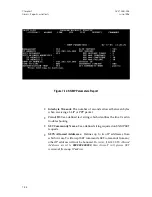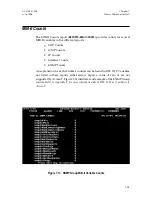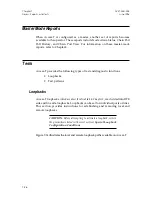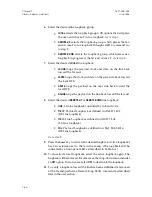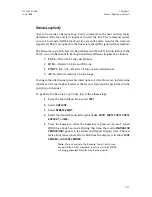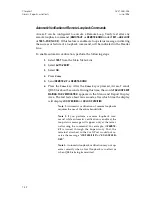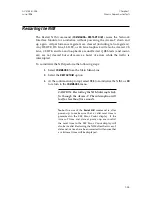
Buffer Error Count
The Access-T Buffer Error Count View command (
COMMANDS—BUFFER ERROR
COUNT—VIEW
) provides a tally of clock alignment errors at the Line, Port 1, Port
2, Port 3, Port 4, and Aux Port interfaces. The primary use of the Buffer Error
Count command is to troubleshoot the system and pinpoint where a problem
is occurring. Although the count value is not critical, whether a count is
incrementing or not is important. If the error count is escalating at Port 1, for
example, the operator can deduce that a problem exists in this portion of the
network. A buffer error is usually associated with a faulty Access-T master
clock. Figure 7-11 illustrates the Buffer Error Count display.
Note:
Buffer Error Count will not increment due to Loss of
Clock Source.
To see if the Buffer Error Count is escalating, follow these steps:
1.
Select
COMMANDS
from the Main Menu Line.
2.
Select
BUFFER ERROR COUNT
.
3.
Select
CLEAR
.
4.
Select
YES
. (
Cleared the Buffer Error Count
is displayed.)
5.
Press the
Esc
key twice.
6.
Select
VIEW
. If the values for each of the parameters (
Line, Port1
,
Port2
,
Port3
,
Port4
, or
Aux Por
t
) do not equal zero, buffer errors are being
registered. If all parameter values equal zero, Access-T has not re-
ceived any buffer errors since the count was last cleared.
Note:
Loss of clock source does not increment the
buffer error count
Figure 7-11. Buffer Error Count Display
Chapter 7
ACST-0351-005
Alarms, Reports, and Tests
June 1996
7-22

















